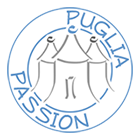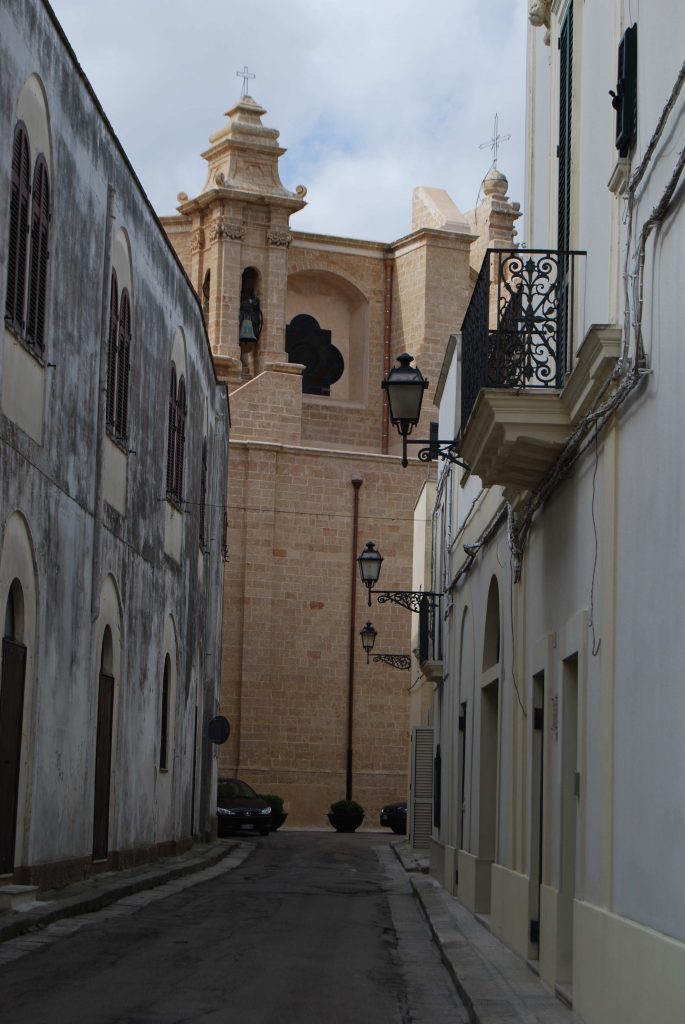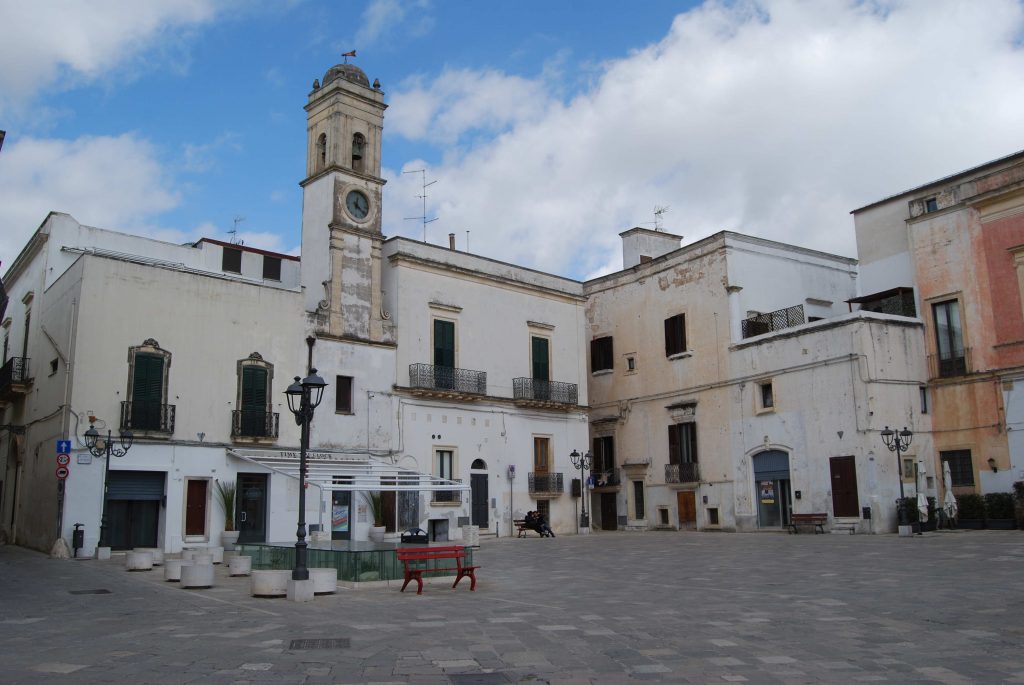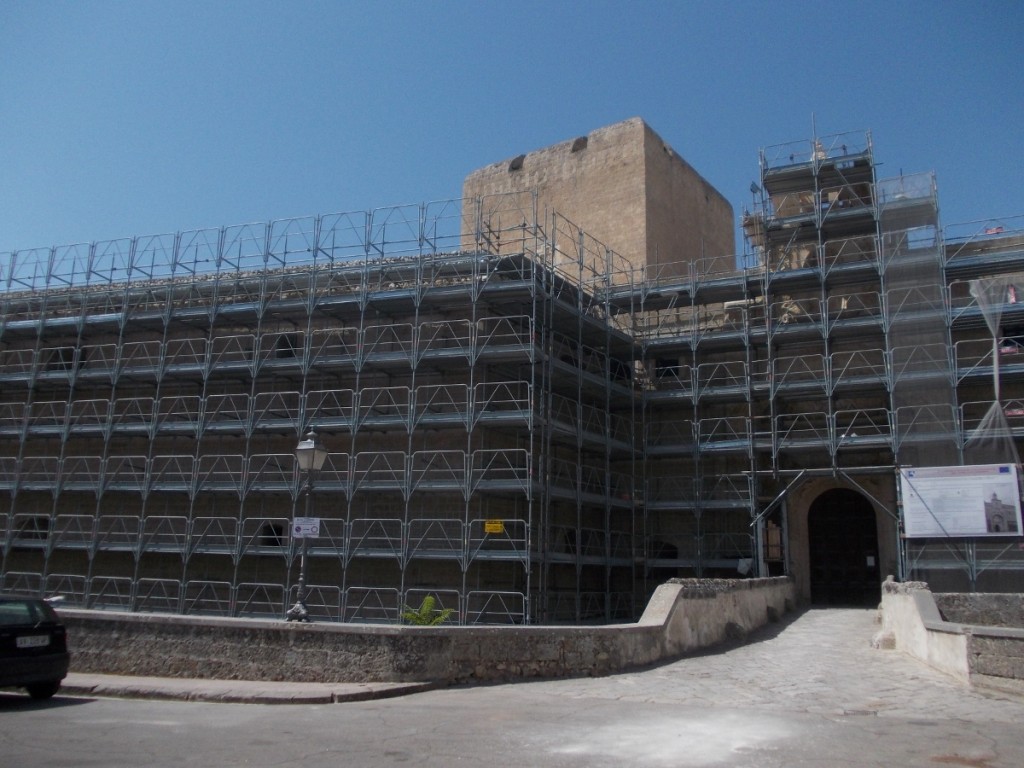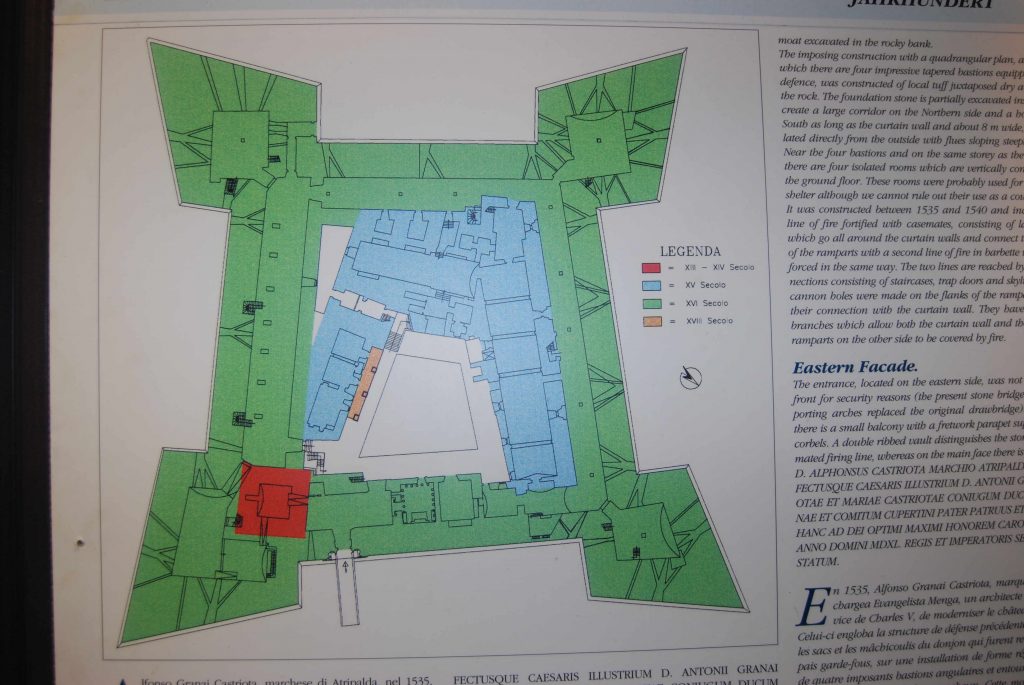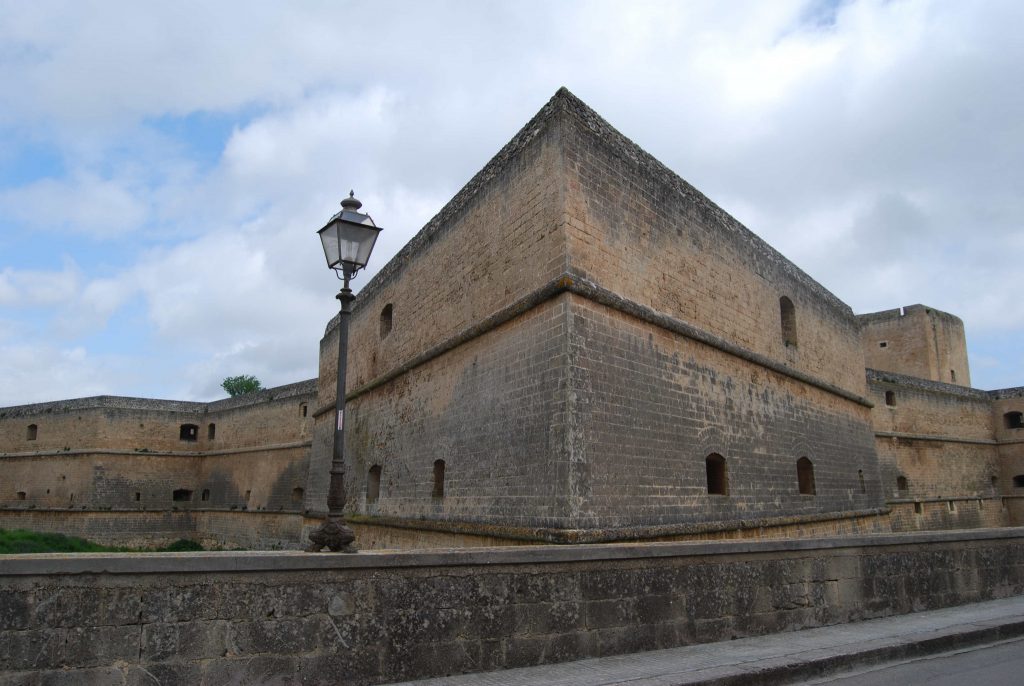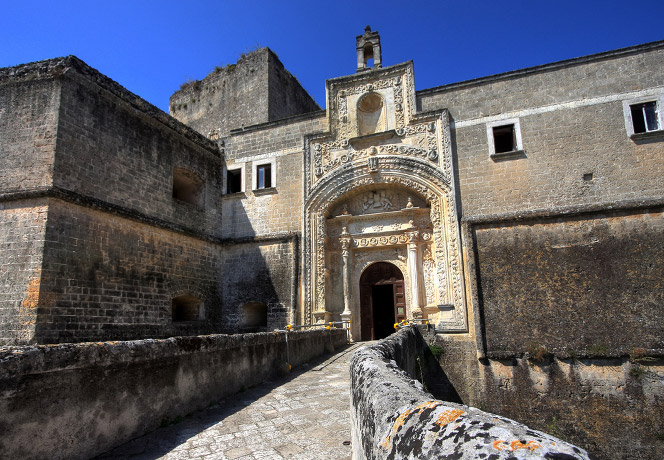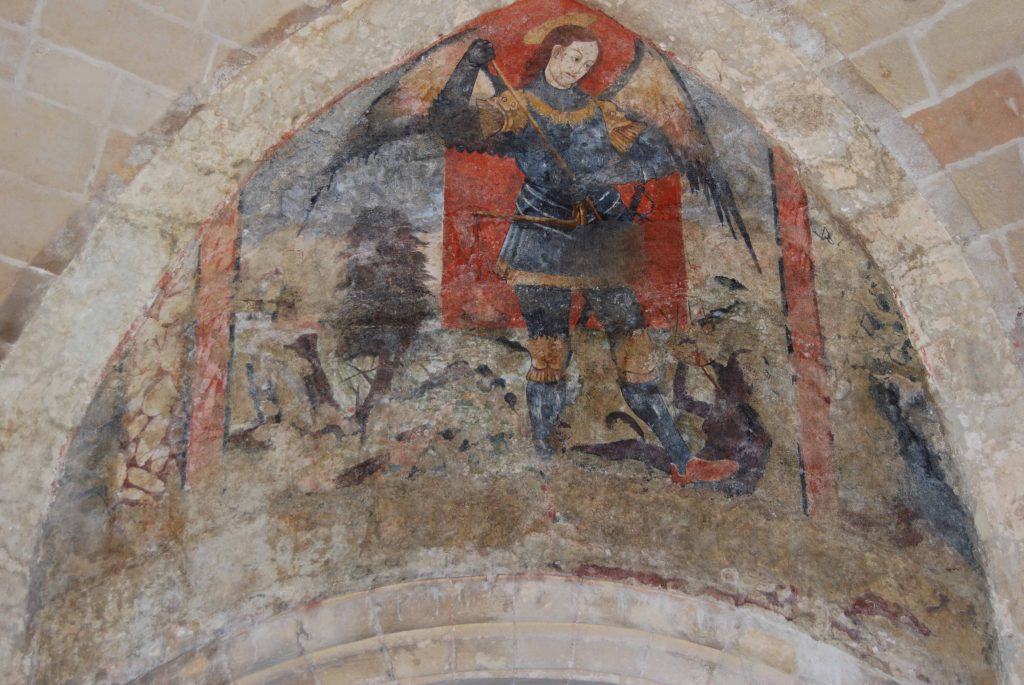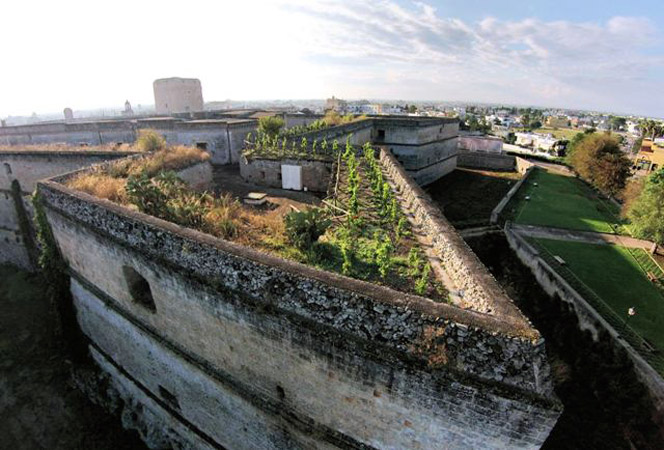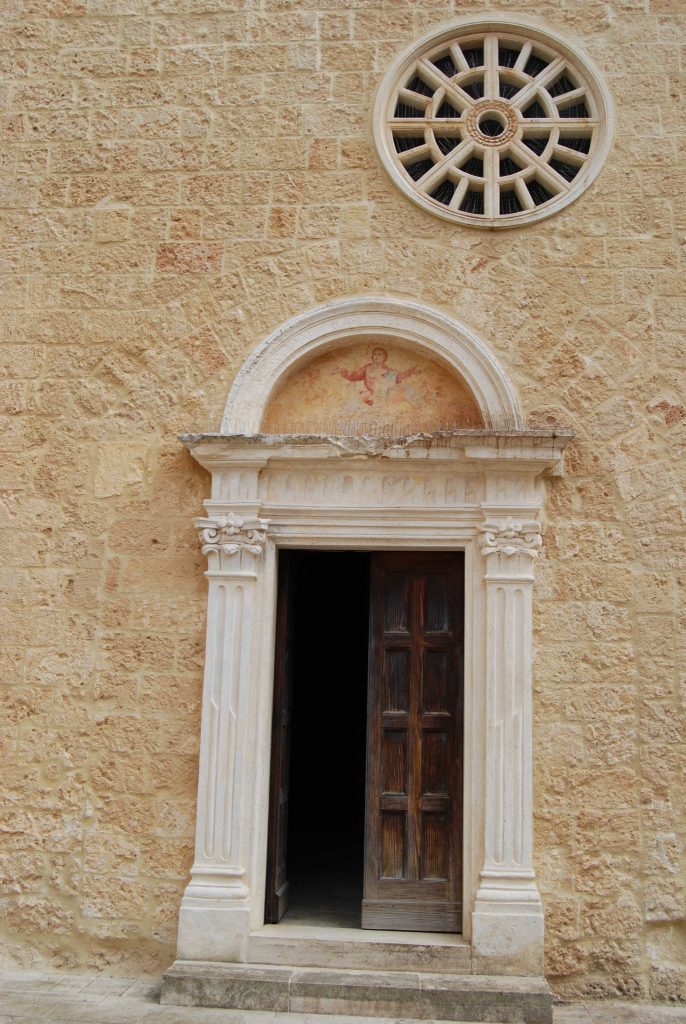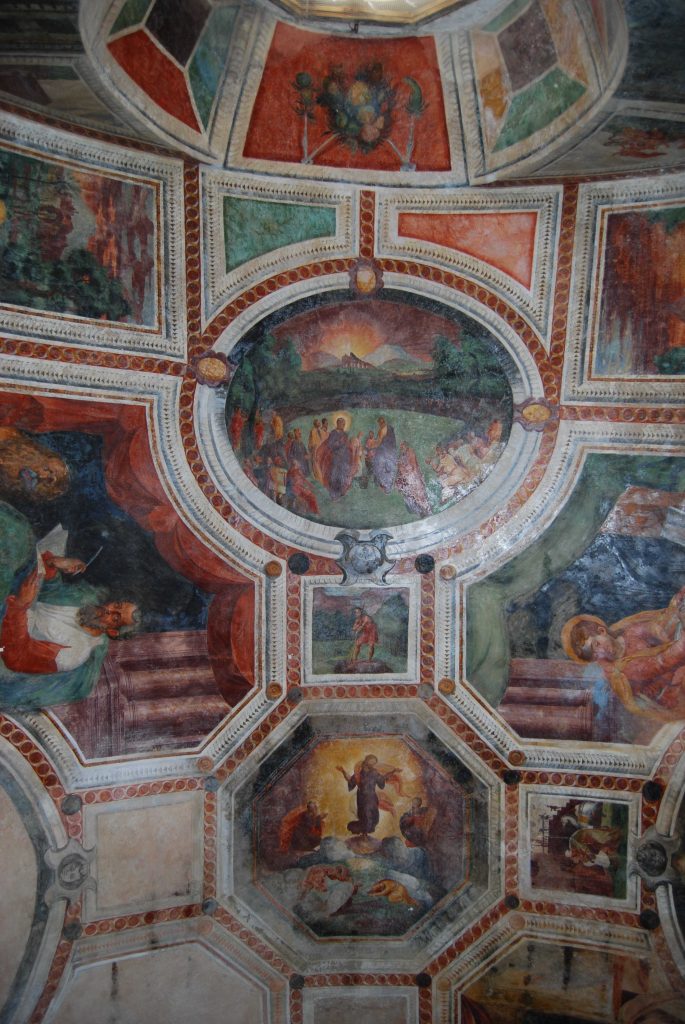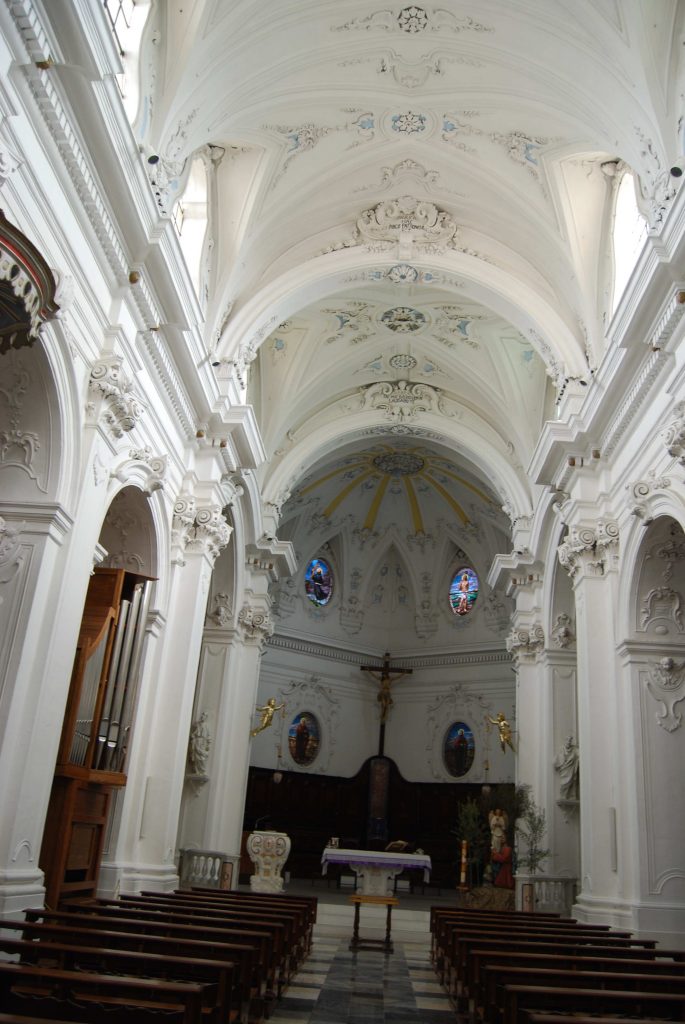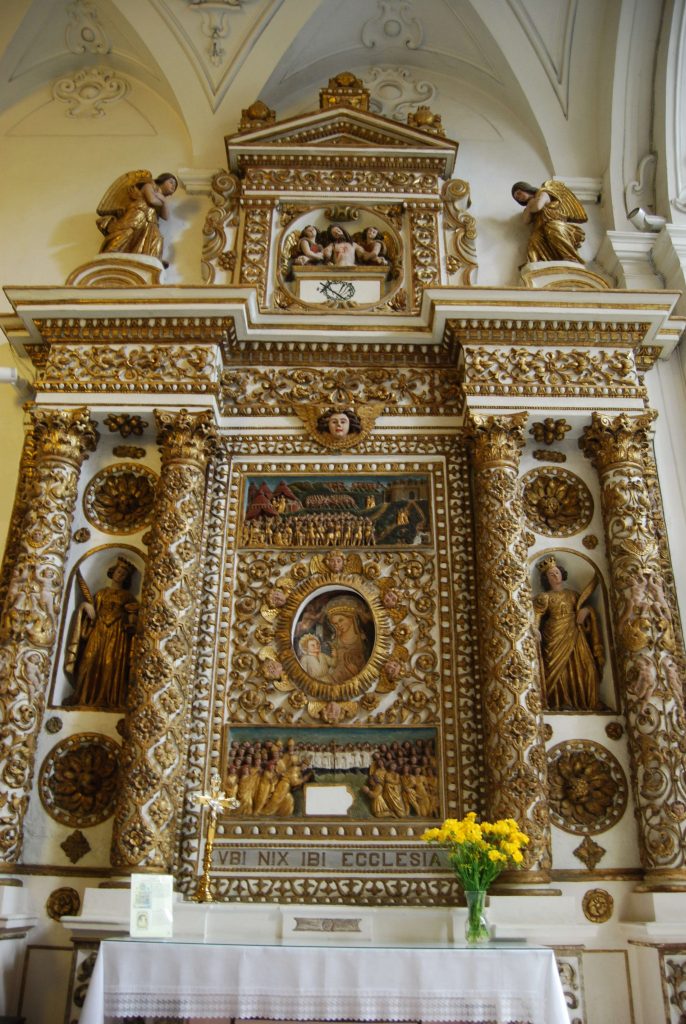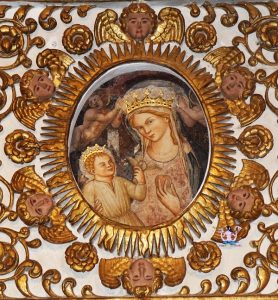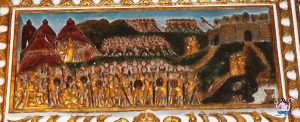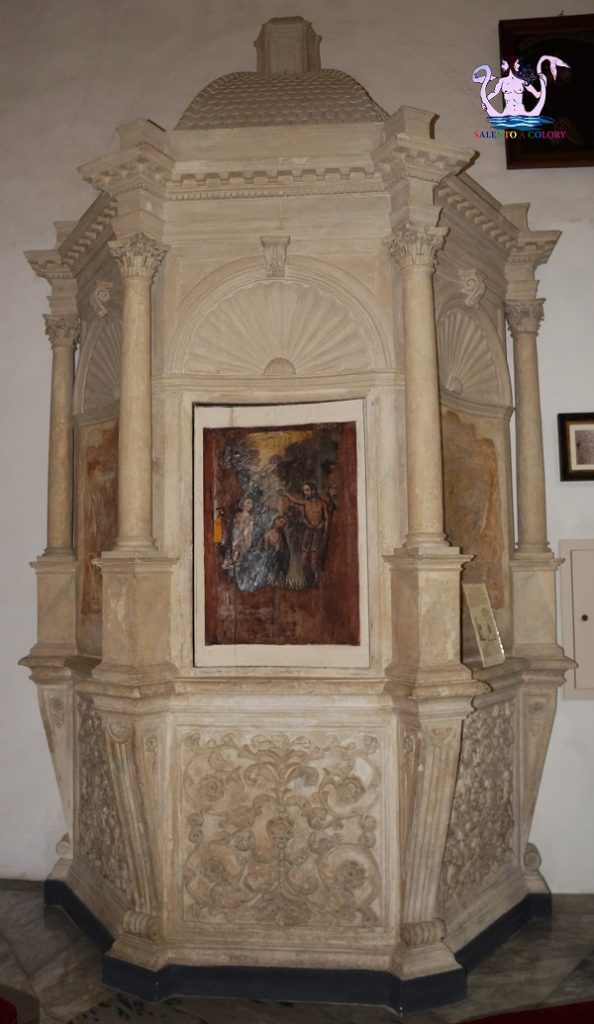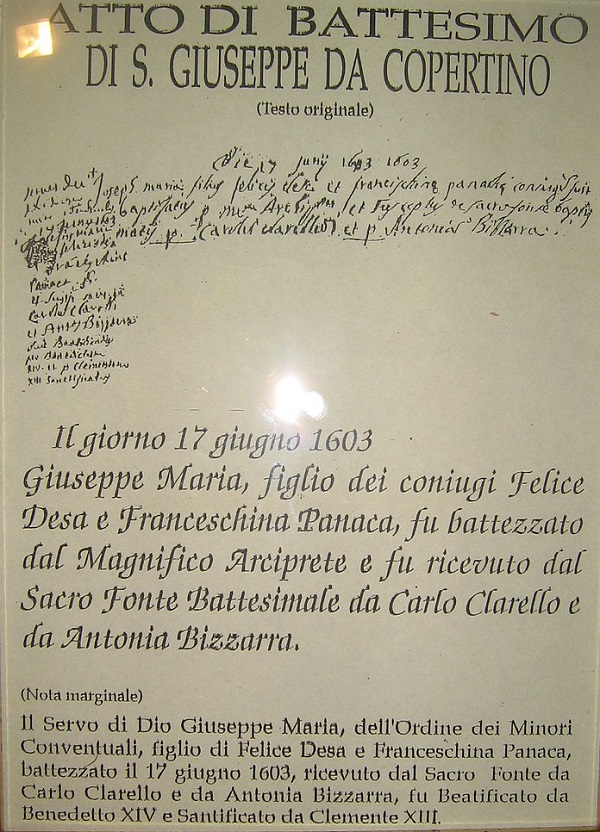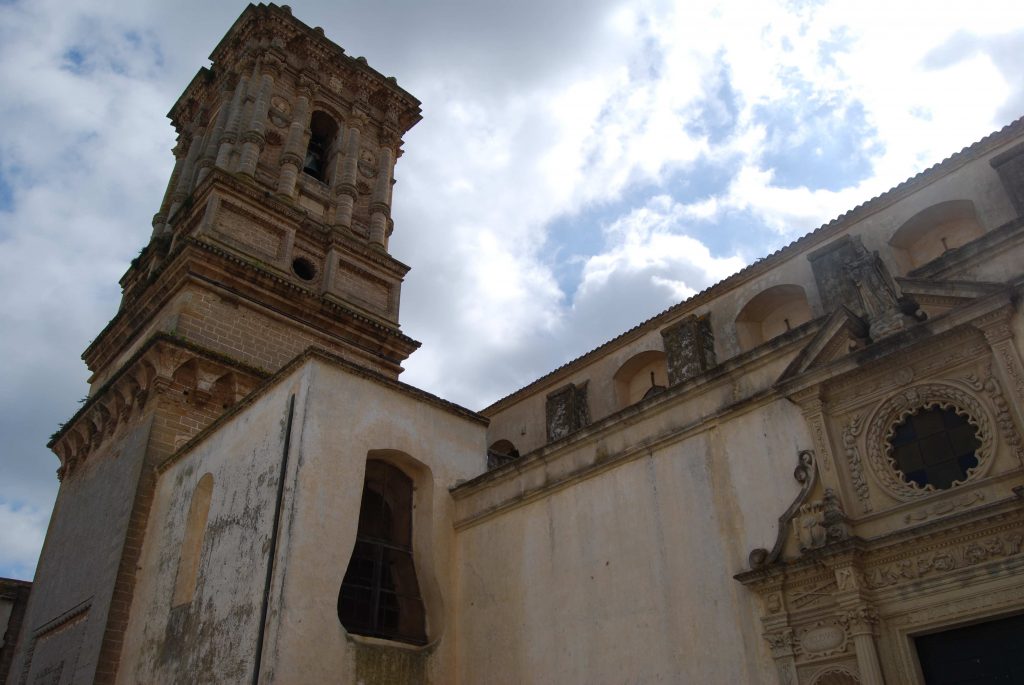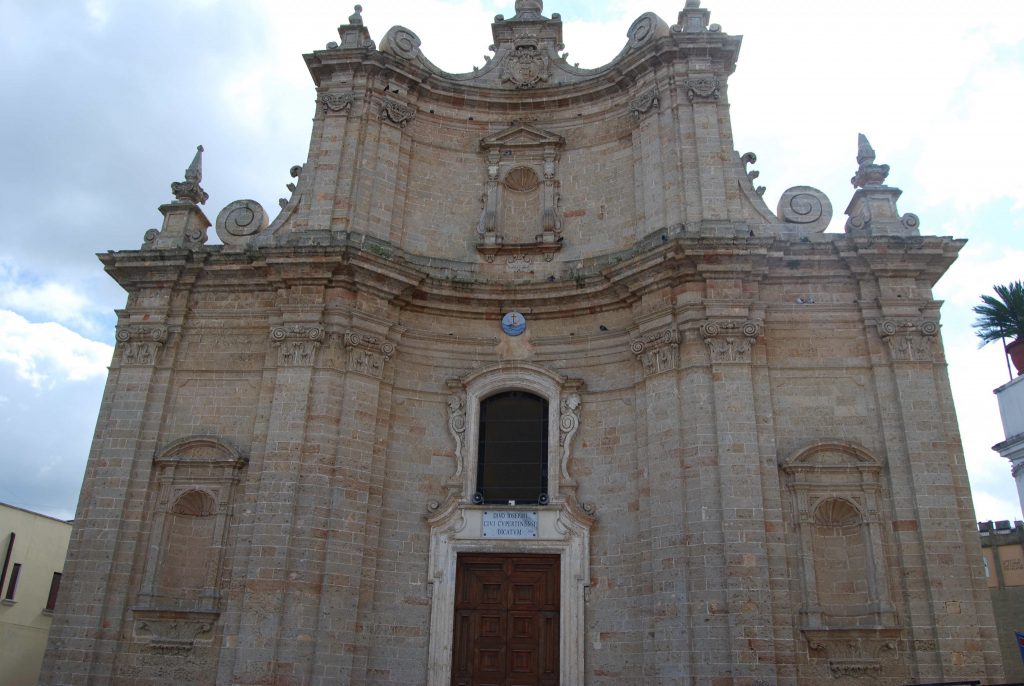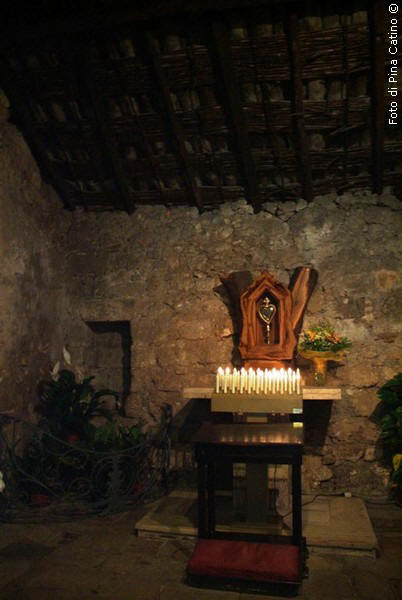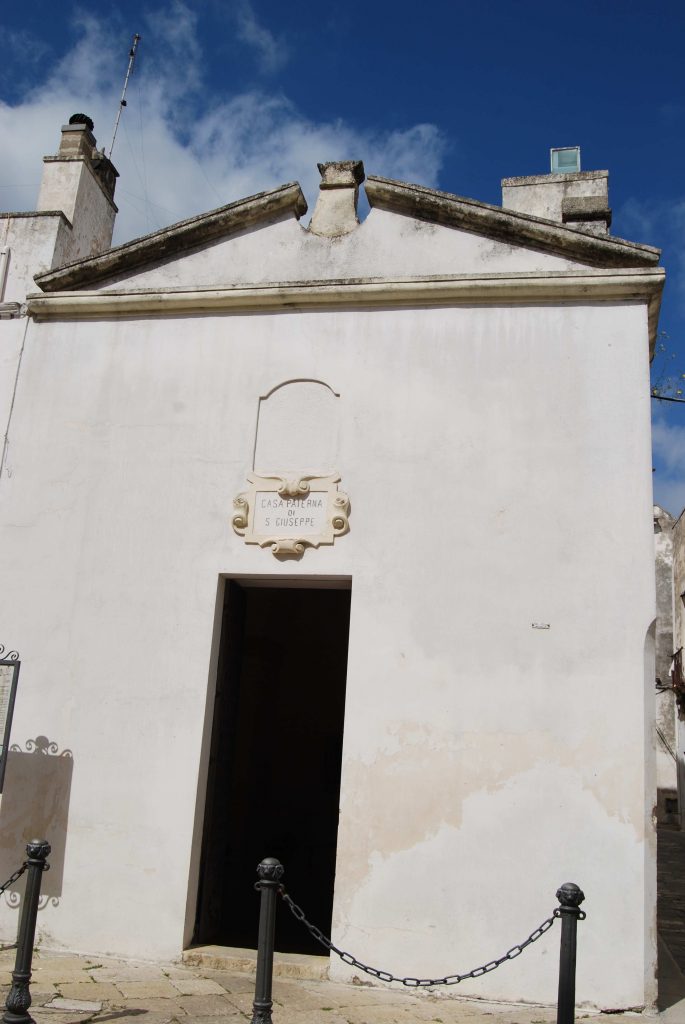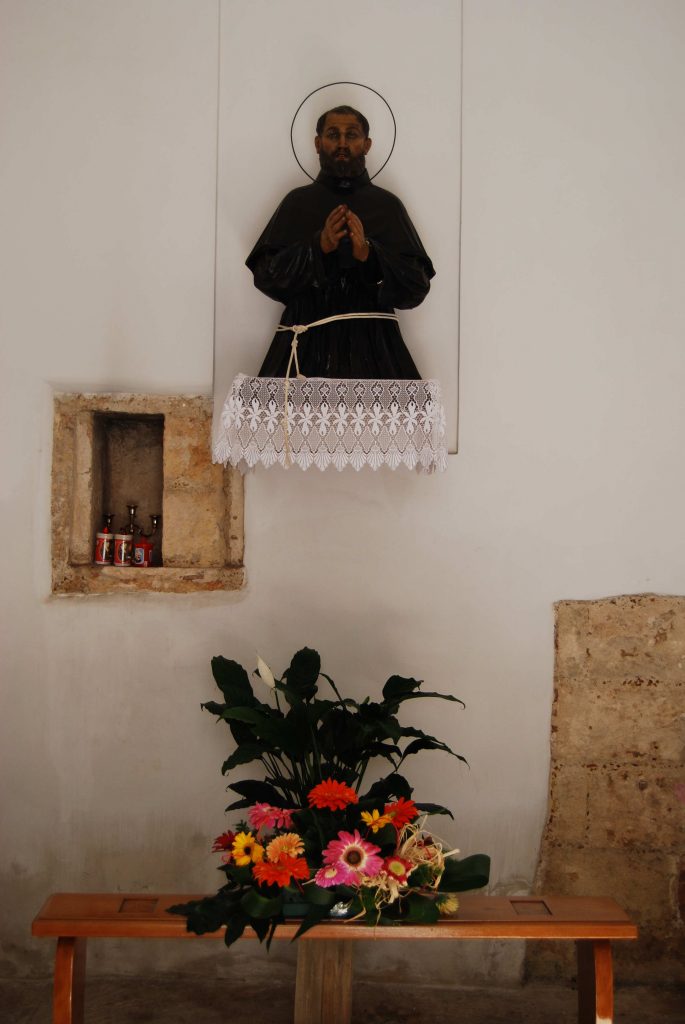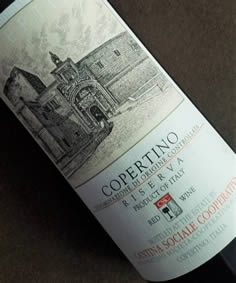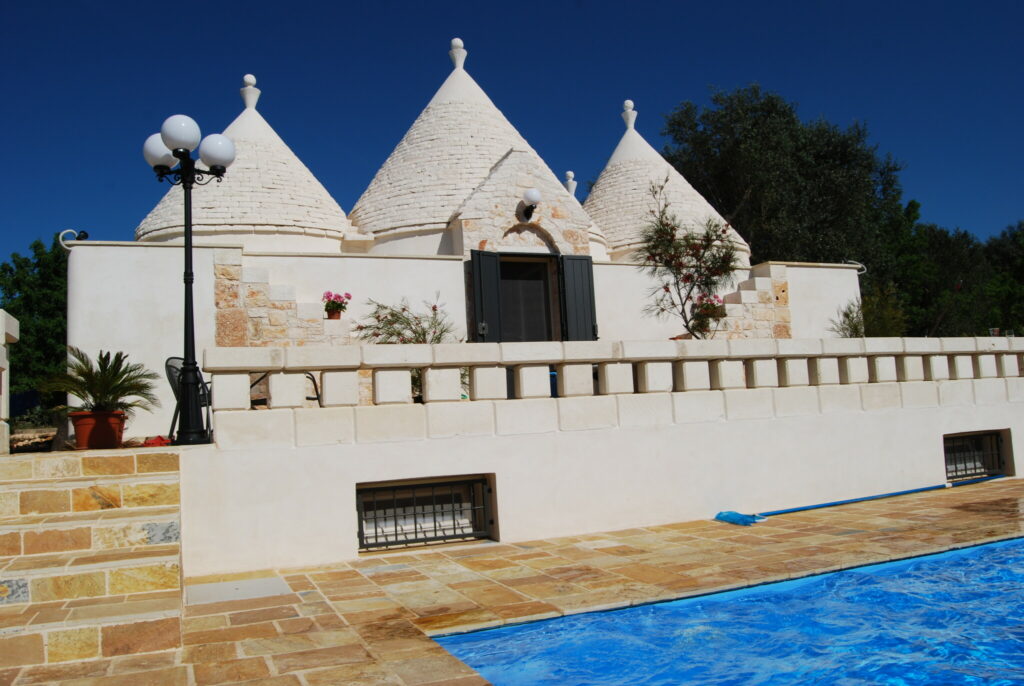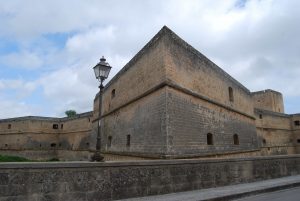
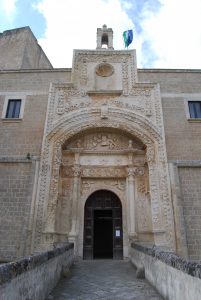
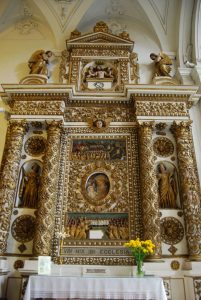
Copertino is a medium sized town (population 22,000) about 15km south west of Lecce. It is one of a trio of towns in that area - Nardo and Galatina are the others - which have small but exquisite historic centres. However, what makes Copertino special is its castle - one of the very largest in Puglia. Although there are some significant churches and other places of interest, the castle is really the key attraction; this alone makes Copertino well worth a visit if you are in the area. Copertino also boasts a famous Negroamaro DOC wine; and it is the birthplace of San Guiseppe of Copertino (a church is dedicated to him) whose story is detailed below explaining why he bacame the patron saint of pilots, aviators and of students.
In our view, Copertino is underestimated as a visitor destination, and now that the redevelopment of the Piazza castello is finished it is possible the authorities will start to promote it more extensively. We therefore give it a lot of attention here. The detail is divided up as follows:
- Brief History
- Centro Storico
- Copertino Castle
- Porta San Guiseppe
- Two significant churches (Madonna della Neve;San Guiseppe da Copertino)
- Copertino DOC wine
- Some practical information for visitors.
Brief History
Copertino was established in about 950 AD by groups of local farmers threatened by Saracen raids, wanting to congregate and defend themselves. It then developed under the Normans and subsequent rulers of the area and became a significant commercial town, based mainly on olive oil production. Walls and other defences were added, including the sturdy tower now incorporated into the castle. It was ruled by a succession of aristocratic families through various regimes.
Centro storico
The centro storico is small and very neat, with creamy stone buildings and surfaces. Although there are a number of religious and public buildings, it is mainly a residential area still. It is much less ostentatious in this respect than nearby Galatina, which has numerous palazzi with decorated balconies, doorways etc. Simplicity seems to be more characteristic in Copertino.
The main street of the old centre is Via Margherita di Savoia, which runs from the modern Piazza Umberto I (where you can probably find a car parking space if required) to the Piazza Castello and the castle. The street widens out in one section to form Piazza del Popolo, overlooked by a clock tower; this is the focal point of Copertino's old centre (although we imagine this will be taken over by Piazza Castello in future now its renovation is completed).
Copertino Castle
The Castello is undergoing a lengthy and very extensive renovation. When we first visited in 2015, it was covered in scaffolding (see picture).
By the time of a visit in March 2019, the scaffolding had gone, to reveal the massive defensive structure, and ornate arched gateway. However, the Piazza Castello was still undergoing a complete renovation to provide a grand approach to the front of the castle. Already then worth a visit, we predicted that in a couple of years' time the castle will make Copertino one of the top tourist destinations of Puglia.
By the time of a visit in August 2022, progress on restoring the castle had moved on a little, and renovation of the Piazza had just been completed (work on both of course held up by the pandemic). The Piazza now provides a beautiful space overlooked by the castle. A restaurant and wine bar have opened and summer evening concerts were being held there; but it was still much quieter than we expect it will be before long when some more systematic promotion of Copertino is undertaken. So visit now before the crowds arrive!
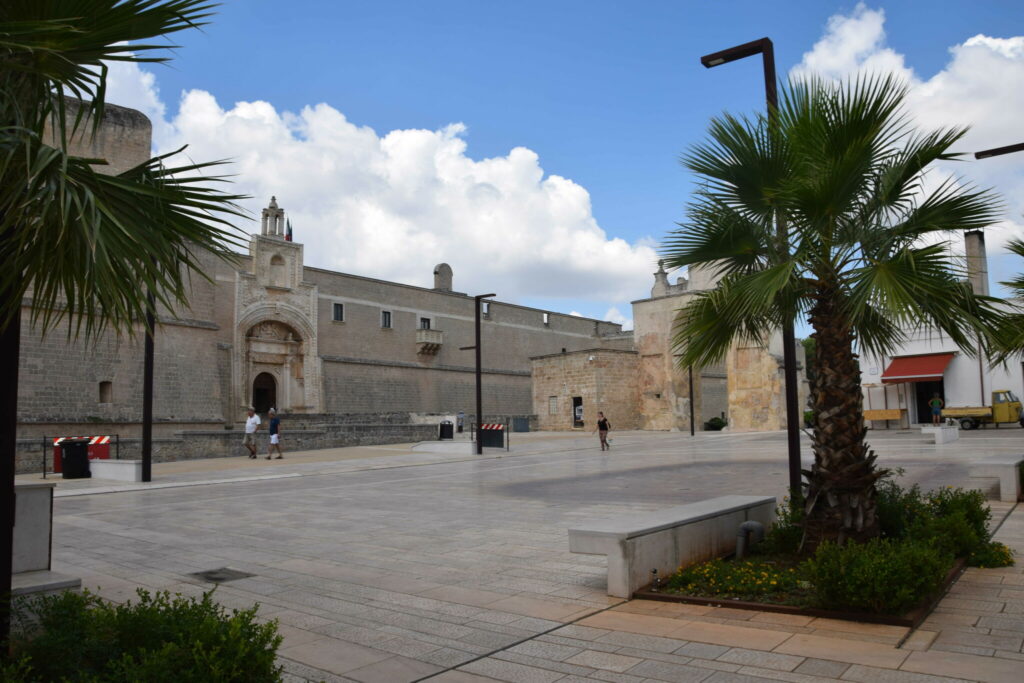
You can go inside the castle (open to the public 8.30am-1.30pm, Tuesday -Saturday). However, as well as the imposing courtyard, usually only the ground floor is open to visitors (in time the upper floors will be included). The cost is 5 euros, which is quite a lot for what is currently available, but overall it is worth it, especially if you regard the charge as contributing to the renovation.
The main fortifications consist of four huge bastions (with 90 arrow slits) linked by walled ramparts, built in the mid 16th century by Marquis Alfonso Granai Castriota, a general under the Emperor Charles V and controller of this part of the Italian peninsula. The designer was Evangelista Menga, the military architect of Emperor Charles V.
The trapezoid structure encloses the rectangular tower originally built about 300 years earlier by Charles I of Anjou (it is referred to as the Angevin Tower). With a deep moat crossed by a drawbridge, this fortress was designed to withstand attack by cannons and gunpowder. It is one of a number of structures built to defend the Salento from Turkish attacks (others being the castles at Lecce and Otranto). However, it was always more a grand residence than a military base, owned after 1557 by a sequence of rich Puglian families who built and lived in palatial accommodation just inside the walls. It became a property of the Italian state in 1956.
External appearance is dominated by the high, plain and imposing walls beyond the (now empty) moat. However, these are interrupted by a magnificent Renaissance main gateway with decorated columns, rosettes, sculptures etc.
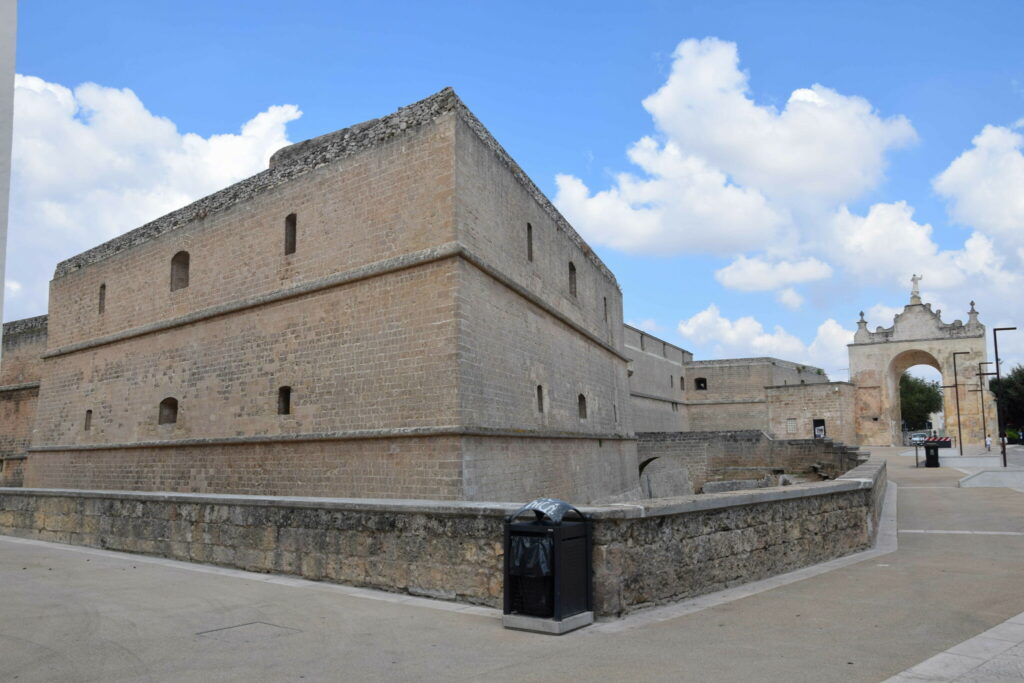
The Renaissance gateway is elaborately decorated to demonstrate great wealth and prestige; in particular it contains emblems and trophies related to military victories over the French.
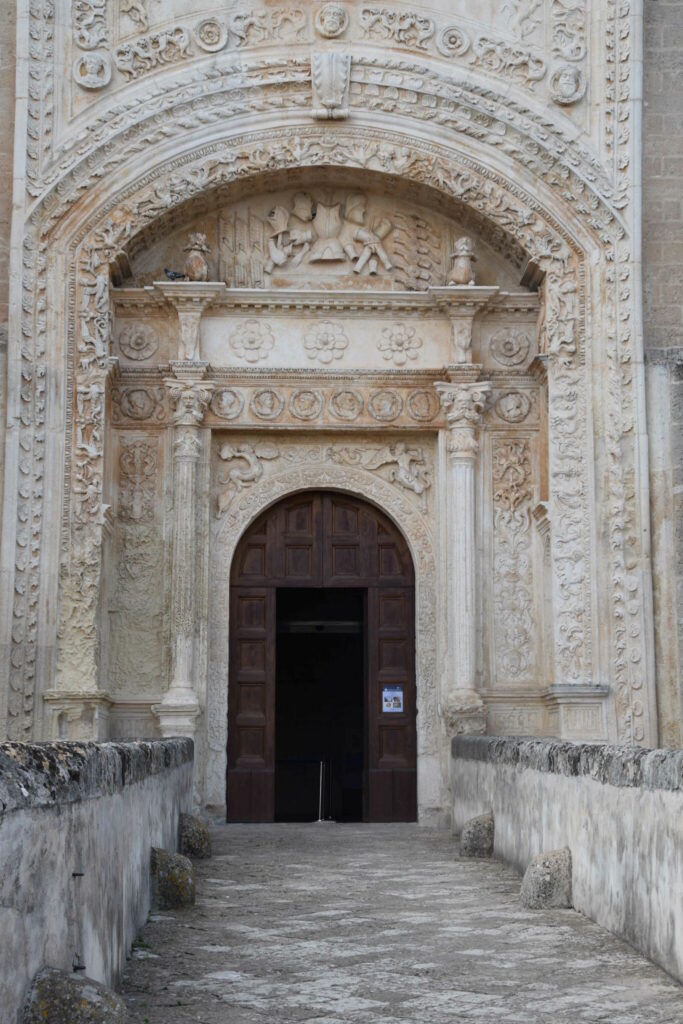
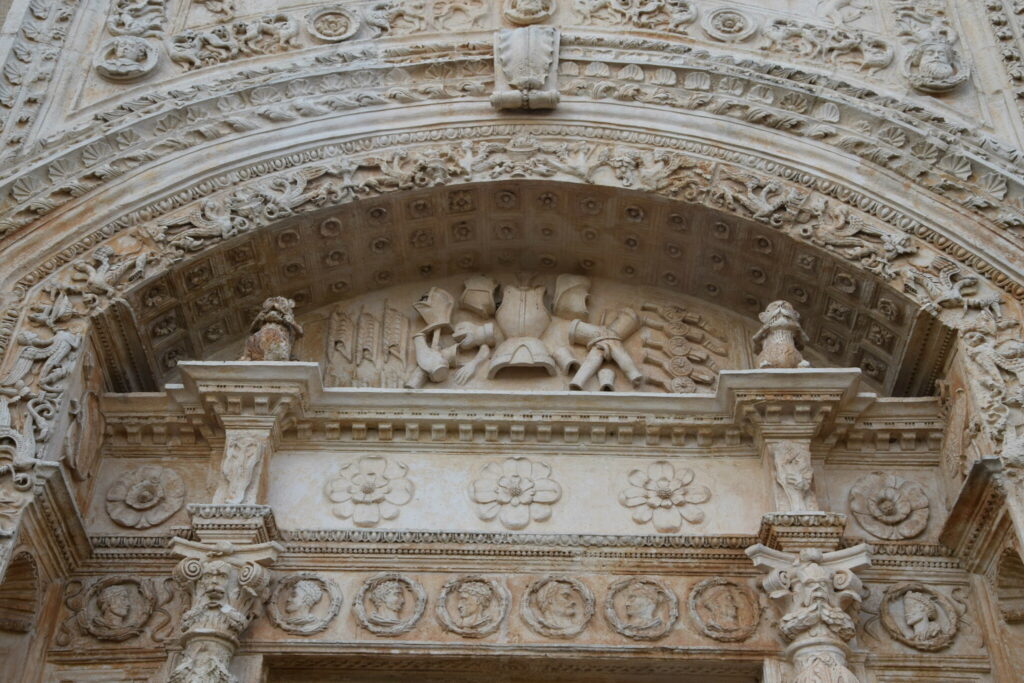
The ground floor around the courtyard consists of cavernous rooms which are now slowly being brought into use for exhibitions, as a museum and for conferences/banquets etc. A limited display of local archaeological discoveries is well displayed, but only occupies a small part of the space available.
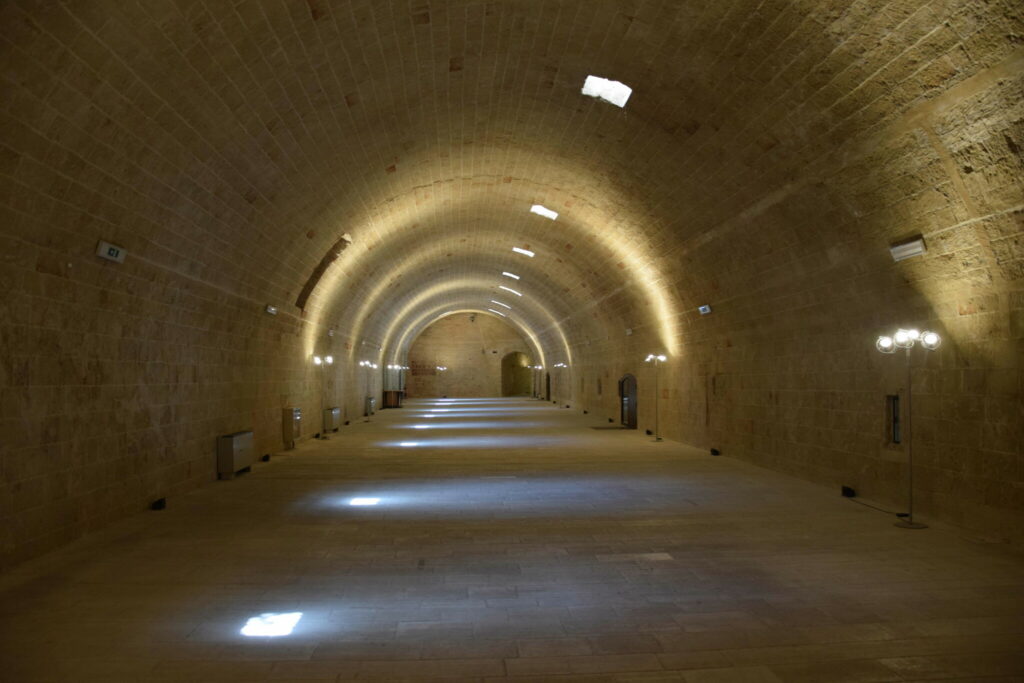

The corners under the main bastions are each dedicated to a saint. Frescoes are gradually on the corners are gradually being restored. One of these is a partly restored original fresco depicting San Michele.
The roof area of the the ramparts and bastions was in the past devoted partly to gardens and to growing vines. A recent project (from 2014) has planted a small vineyard of Negroamaro grapes - still too young to produce wine. We have not seen this garden (we have found a photograph) but understand the gardens are sometimes open for special events, so if you get a chance to visit, this is an opportunity not to be missed.
The courtyard, which contains decorated doorways and a well, has a grand external staircase. This gives access to the upper floors which contain rooms mainly associated with the building's use as a palace for rich and noble families. Hopefully these will be opened up to the public soon. We are also sure that the castle will be discovered by film companies, it is the perfect setting for historical films.
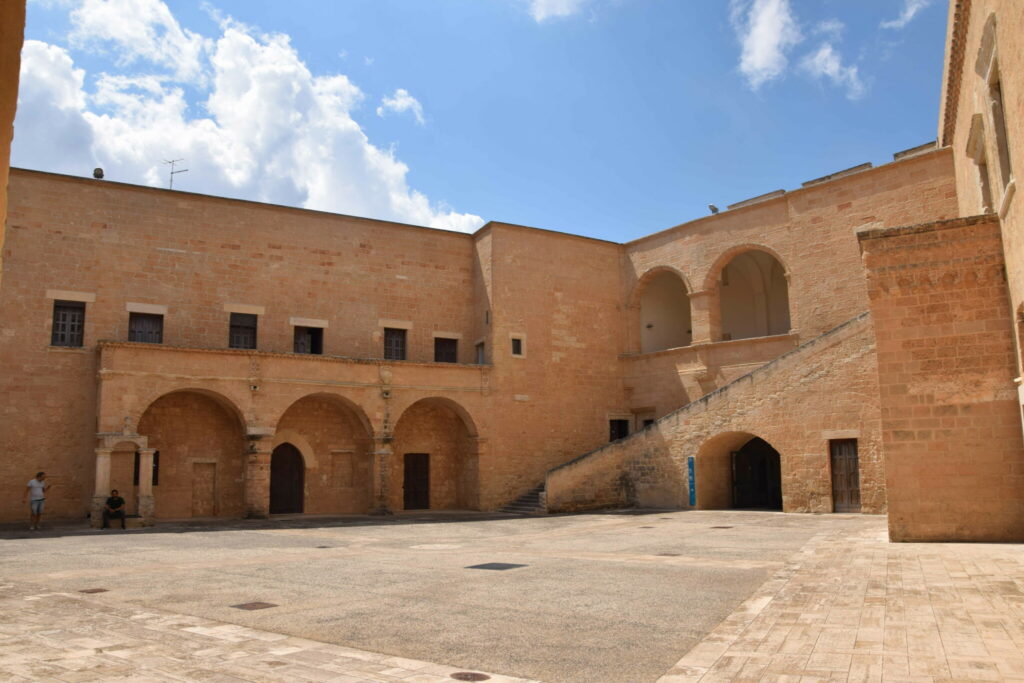
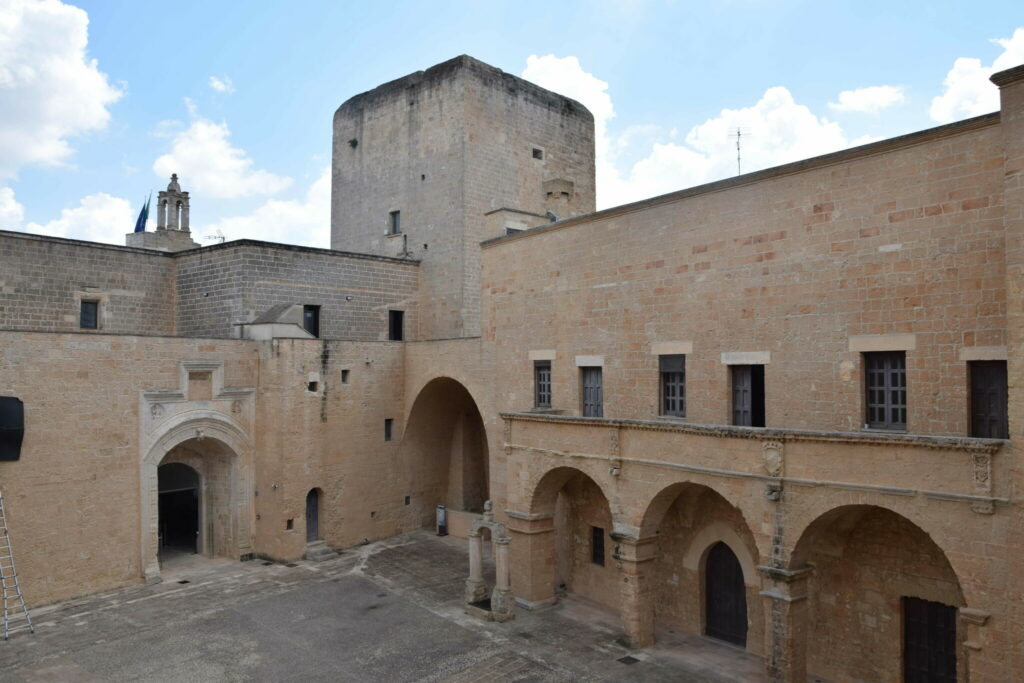
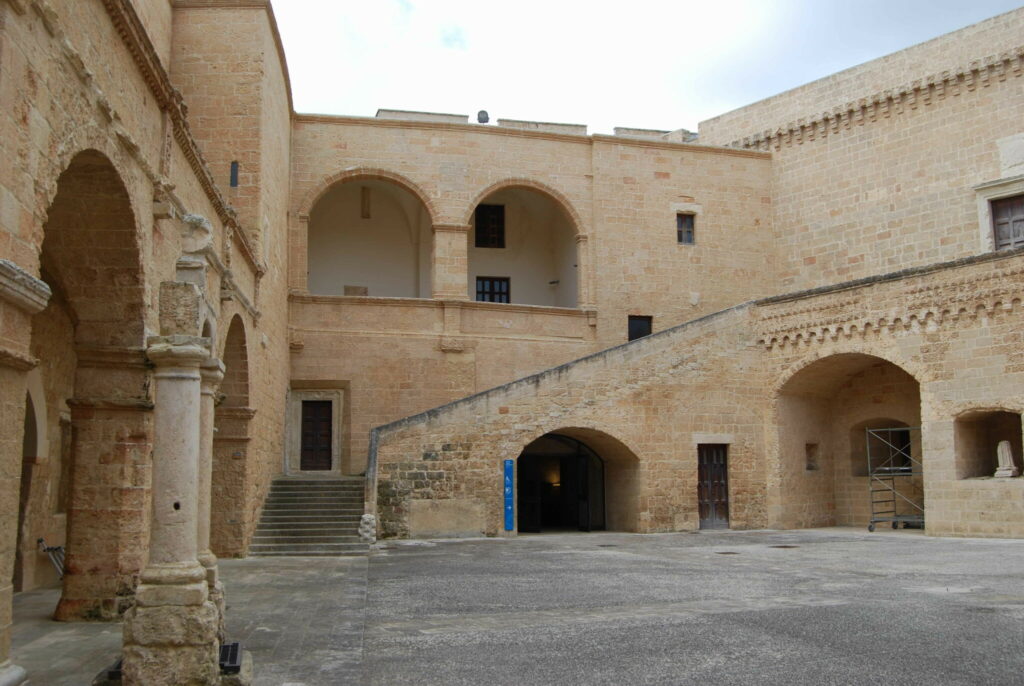
Next to the main entrance, with a small doorway from the courtyard surmounted by a rose window, is a beautiful small chapel dedicated to San Marco. This was built for thir private use by one of the families who owned the castle, the Squarciafico family, two of their sarcophagi are inside. They commissioned some famous frescoes (depicting scenes from the Old and New Testaments) by the local artist Gianseria Strafella, who also worked on the Basilica di Santa Croce in Lecce. He was a student of Leonardo da Vinci and Raphael. His frescoes are highly regarded as examples of late Rennaissance art (usually referred to as Mannerism) in Puglia.
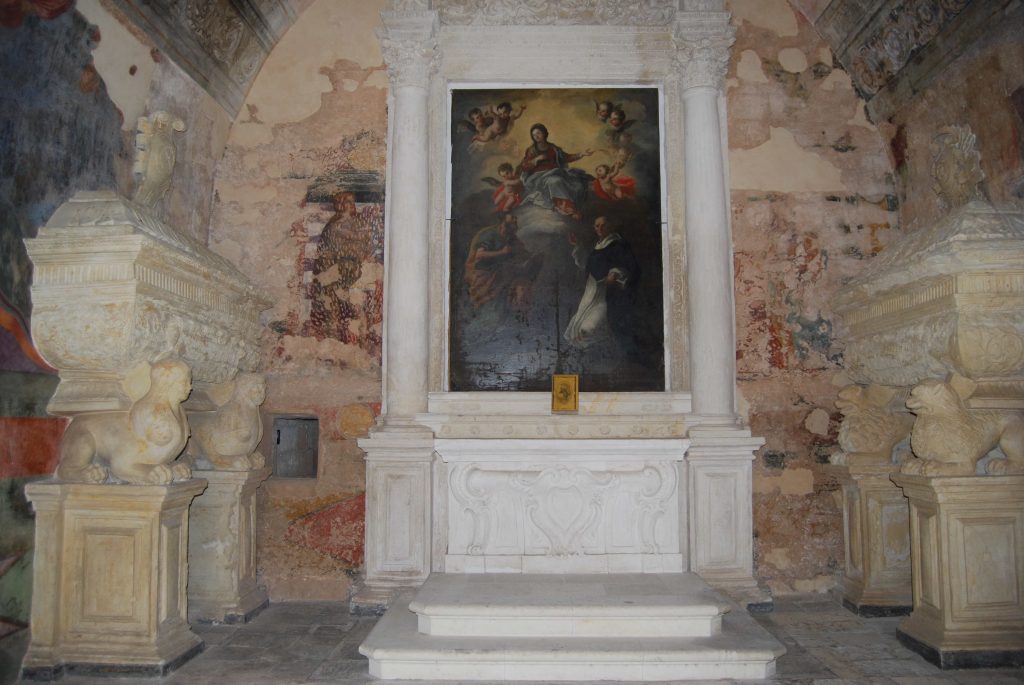
Halfway up the staircase in the courtyard, a low door gives access to a tiny chapel which was only discovered recently - and on the day of the visit in August 2022 this was opened to the public for the first time (NB you may have to ask a staff member to see this, but probably not). This tiny chapel is dedicated to the Maddalena. It contains a well restored portion of a fresco of the saint. This important discovery dates from the 15th century (often described as Late Gothic, much older than the works in the San Marco Chapel).
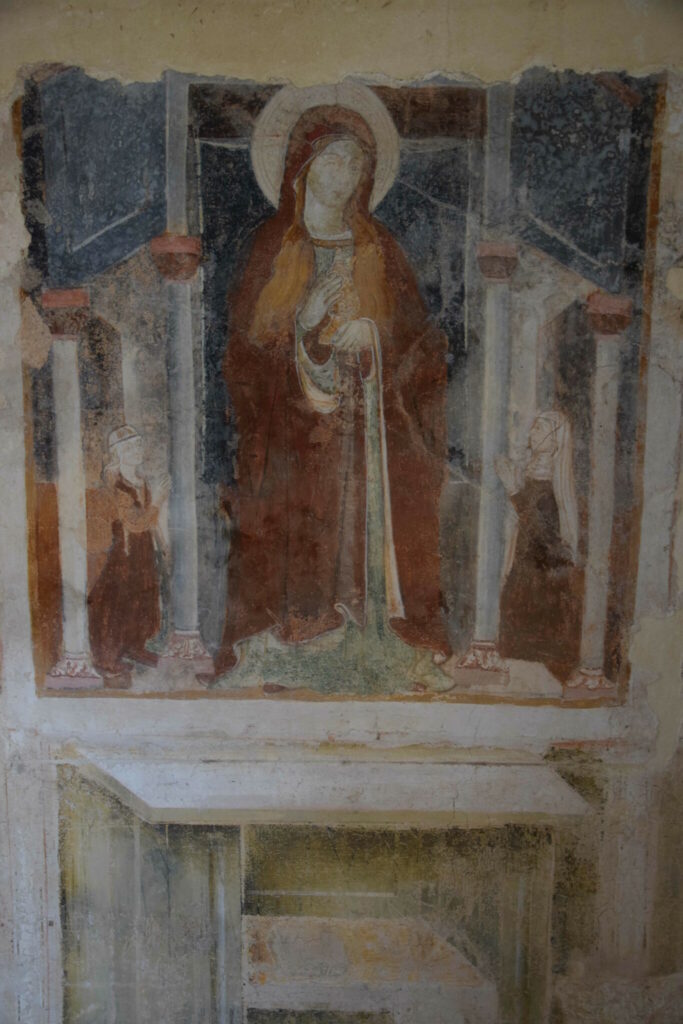
Porta San Giuseppe
The dramatic arched Porta di San Giuseppe adjoins the Piazza Castello. It is dedicated to the patron saint of Copertino, and is one of the gates of the old city, together with the Porta del Malassiso. The Porta di San Giuseppe was erected as the first access road to Copertino, at the same time as the city perimeter walls.
The internal part of the door was completely covered with frescoes and figures of saints in the seventeenth century and the whole door was in fact transformed into a sumptuous triumphal arch after the beatification of San Giuseppe da Copertino in 1753.
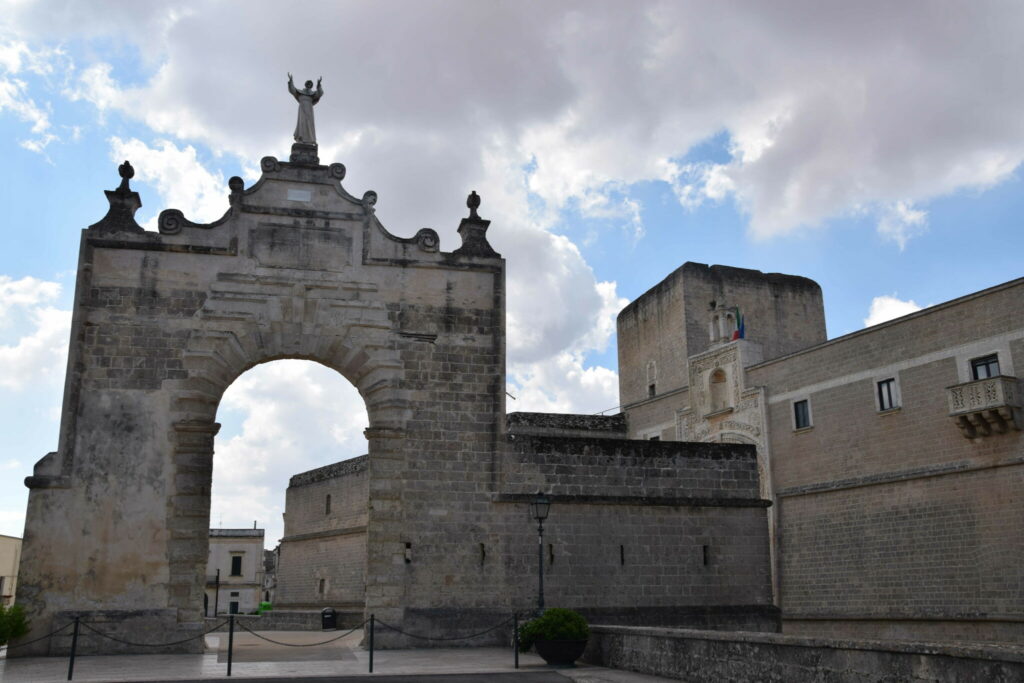
Two signifcant Copertino churches
There are several churches of significance in Copertino. Two in the centro storico are of particular interest and worth a visit if they are open - the Basilica della Madonna della Neve and the Chiesa di San Giuseppe da Copertina.
Basilica della Maddona della Neve ("Our Lady of the Snow") is the city's "mother church". located in the heart of the centro storico. It was originally built in 1088 under Norman rule, but was substantially extended and refounded with its current name about 100 years later by Manfredi (son and successor of the Emperor Frederick II).
The arched central part of the church survives from that time. The aisles and transept were added in the late 16th century; and the whole church substantially renovated in the 18th century - most of the interior decoration dates from that time, including the column decorations and the stuccoed ceiling.
There are several altars. In the left hand transept is a decorative altar dedicated to the Madonna della Neve, designed in 1630 by Donato Chiarello, incorporating a 15th century painting of the Madonna and Child. Above it is an alcove with the body of Christ between two angels; on the sides, in the niches, representations of Saint Lucia and Saint Catherine of Alexandria. There is also a scene depicting the siege of a city (not Copertino).
The Madonna della Neve is associated with a "miracle" not officially recognised as such by the church authorities; it is a legend which first appeared ine early 13th century, referring to an unexpected August snowfall in Rome, predicted in dreams as the place where a church dedicated to the Virgin should be constructed.
The font of the church is where in 1603 Guiseppe Maria Desa was baptised - he later became San Guiseppe da Copertino.
There are various altar paintings and statues of saints, including San Guiseppe da Copertino of course. The most significant painting is of the Deposition, a late Renaissance (Mannerist) work by the local artist Gianserio Strafella (a follower of Michaelangelo and Raphael) in 1570-1575.
The 35 metre high bell tower was constructed at the end of the 16th century. The upper part of the tower is richly decorated.
The Chiesa di San Guiseppe da Copertino is nearby, and is probably more famous than the "mother church" because of its association with the saint.
In 1603, Copertino was the birthplace of Guiseppe Maria Desa who later became San Giuseppe da Copertino, also known as 'The Saint Who Flew'. From an impoverished background, he started having ecstatic visions as a child and as an adult was drawn to a religious life largely because he was almost completely useless at anything else! It is claimed that he regularly levitated whilst conducting religious ceremonies, his growing reputation earning him the suspicion of the Church superiors who confined him to a cell in various parts of Italy, mainly Assisi; and denounced him for practising witchcraft. He died in Le Marche in 1663. However, his reputation recovered after his death; he was beatified in 1753 and canonised in 1763. His fame for levitation, or flying, made him the patron saint of air travellers, pilots and astronauts; he is also the patron saint of students, because of his difficulties in passing religious exams!
A church dedicated to him was constructed in Copertino in the mid 18th century just after he was beatified. This is a comparatively simple structure, built on the site where he was born, a stable/outhouse where his mother was hiding from his father's creditors. The stable, La Stalletta, is incorporated into the church as a simple shrine, a small room with rough walls and simple wooden roof. The saint's body is preserved where he died, at Osimo, near Ancona; however his heart was transferred to Copertino in 1953 and is preserved in La Stalletta.
As well as the Chiesa di San Giuseppe, the house opposite the entrance, which was the home of his family, was converted into a small chapel with a simple altar and a painting of his mother. This is open to visit.

Copertino DOC wine
Copertino wine (produced from an area about 10 km in diameter around the town) is a strong red which has been awarded DOC status. It comes from the local grape Negroamaro (which must constitute 70% of the grape varieties used).
The area is especially suitable for wine. With 300 sunny days each year and mid-summer afternoon temperatures regularly surpassing 40C, the grapes which grow here develop high levels of sugar so the the wines made from them are subsequently high in alcohol. The wine labels from Copertino understandably feature on the decorations at the entrance to the castle.
Some practicalities for visitors
There are ample parking opportunities around the edge of the centro storico.
Copertino can be reached easily by train using the Ferrovaria Sud Est from Lecce - the centre is a 10 minute walk straight ahead from the station alon Via Roma.
The town is hardly developed as a tourist destination at the moment, although this may change once the work to the castle is completed and some systematic promotion is undertaken. There is no Tourist Information Centre and little in the way of information boards etc.
Bars, cafes and restaurants are rare in the centro storico itself. However, there are some bars which serve snacks and drinks on Piazza Umberto I and (near the castle) Via re Galantuomo. A restaurant is now open in the Piazza Castello looking directly at the dramatic castle gateway; it receives good reviews on Trip Advisor, although we have no personal experience.
